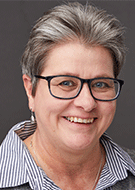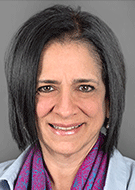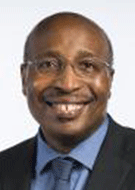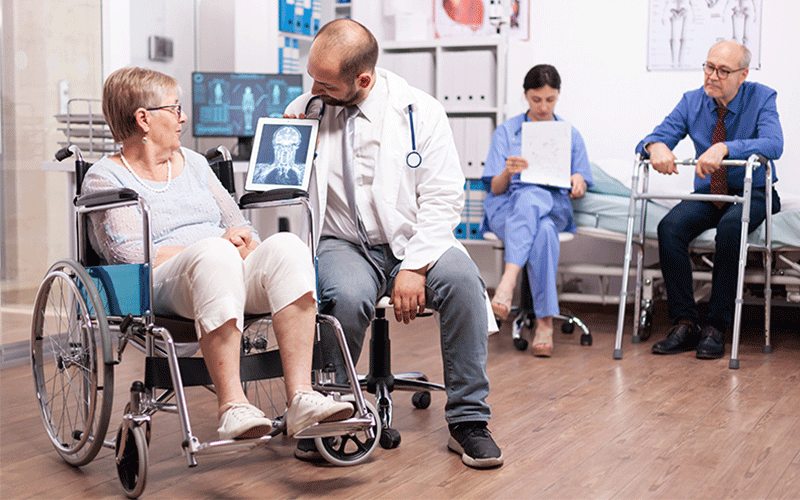Improving Health Care Access for Patients with Different Abilities
Communication, technology and education opportunities exist in imaging patients with physical and cognitive challenges



As the focus on health care equity sharpens, radiologists and radiologic technologists must prioritize the development of strategies and protocols to best serve patients who face physical and/or cognitive challenges that impede their ability to undergo medical imaging.
“When people are physically or cognitively unable to follow instruction, it is a barrier,” said Jane Harvey-Lloyd, PhD, MSc, associate professor in diagnostic radiography and deputy head of the Specialist Science Education Department at the University of Leeds in England. “It’s better psychologically and physiologically to remove these barriers so you can pinpoint the health problem at a less advanced stage. When you wait, problems become more complicated, and you have less control over the outcomes.”
Dr. Harvey-Lloyd emphasized the importance of seeing each patient as an individual. “It is imperative for health care staff to exercise effective communication, a willingness to learn and to change,” she said. “Have the humility to take off the expert hat and work with the patient. No matter what their challenge, they are the ones to tell us what they can and cannot handle.”
She said that better communication from the radiologist or referring provider to the technologists is needed to better prepare for any special accommodations a patient may require, regardless of their challenge.
“It is imperative for health care staff to exercise effective communication, a willingness to learn and to change. Have the humility to take off the expert hat and work with the patient. No matter what their challenge, they are the ones to tell us what they can and cannot handle.”
— JANE HARVEY-LLOYD, PHD, MSC
Patients With Cognitive Challenges
For patients with autism, Dr. Harvey-Lloyd said the journey through patient-centered care may begin with a patient passport. Available for online download, the passport details any given patient’s optimal method for communicating key information to the provider, so that the imaging experience runs more smoothly. This can include the patient’s particular likes, dislikes, preferred communication methods, sensory concerns and other information that may aid in a successful care interaction.
However, while they can be handy, Dr. Harvey-Lloyd said the passports are not commonly used. In their absence, technologists must rely on information entered into a patient’s electronic medical record which can sometimes be absent or incomplete.
This can force technologists to improvise individualized strategies. “We don’t always receive a lot of information up front, and when we do, it comes more often from the clinician than the radiologist,” said Patricia Giorgio, MM, RT, director of radiologic technology in the Department of Radiology at Boston Children’s Hospital (BCH).
As the population of patients with behavioral challenges grows in her hospital system, Giorgio said she and her staff have increased efforts to develop protocols to address their needs.
“We have processes in place for patients with individualized behavioral plans, and this information is flagged in the patient’s medical records when exams are scheduled,” Giorgio said. “However, for walk- ins, preparation takes more time and is more challenging.”

Resources Aid Health Care Access
Technologists can leverage available tools, resources and creative thinking to better facilitate access to care. According to Dr. Harvey-Lloyd, instead of asking patients to adapt to the care, the care should adapt to the patient.
“Imaging professionals and others in health care can think about ways to make the environment less frightening,” Dr. Harvey-Lloyd said. “Is it too light? Too dark? Too crowded? Too loud? Addressing these concerns before they become a problem can be highly beneficial.”
At the Shirley Ryan AbilityLab (SRA) in Chicago, technologists have developed expertise and built protocols after routinely working with individuals with a wide range of impairments related to neurological and musculoskeletal conditions and traumatic injuries.
“Our team employs state-of-the-art equipment including lift transfer devices, patient harnesses, enclosure beds and positioning sponges,” said Vidal McNeal, MBA, radiology manager at the SRA. “We also perform a lot of cross-table techniques to help us get the images we need.”
Assistance can come from outside the radiology department, too. According to Giorgio, the staff at BCH works with a behavioral response team and child life specialists. “They are not radiology employees, but they support us—they have their own well-honed tools and techniques,” she said.
Safety Training and Education Focused on Different Abilities
Ongoing expansion and renewal efforts at BCH have led to the addition of more ceiling mounted lifts in imaging suites, among other upgrades, according to Giorgio. The newer technologies can aid radiology technologists in moving and positioning patients affected by obesity or other mobility challenges.
While she acknowledged that these updates can be costly and require additional training, Giorgio emphasized that the benefits include increased safety for both patients and technologists. It’s an important consideration given existing health care labor shortages.
“The health care staffing crisis exists across all careers and the national shortage of technologists exists across all modalities,” she said.
Though technologists at most institutions undergo training that includes safe patient mobilization, the depth, breadth and frequency of training—particularly in-depth training that targets care for patients with various cognitive and physical disabilities—varies across organizations.
McNeal and the technologists at SRA receive training on safe patient handling and undergo specialized training to address the unique needs of their patient population. “Our hands-on training focuses on typical injuries that we see at our facility, such as paralysis and brain injury. As radiology techs, we take what we have learned and use a frame of reference when we encounter our patients daily,” McNeal said.
In the U.K., the National Health Service’s Health and Care Act 2022 requires regulated service providers to ensure their staff receive learning differences and autism training appropriate to their respective roles.
Among available programs, Dr. Harvey-Lloyd said technologists in the UK can access a new e-learning program called The Oliver McGowan Mandatory Training on Learning Disability and Autism program. Named after a patient whose avoidable death highlighted the need for improved health and social care staff training, the program ensures care providers have the right skills and knowledge to provide safe, compassionate and informed care to people with autism and people with learning differences.
Sustained and ubiquitous deployment of focused education can better prepare technologists and pave the way for increased access and equity in health care for all patient populations, regardless of the barriers they must overcome.
“It is incumbent on all medical professionals to consider what we can do to operate around the barriers and enhance both access and experience,” Dr. Harvey-Lloyd said. “There are no universal adjustments that will help all patients, but there are things we can learn and think about that can have widespread impact.”
For More Information
Access the RadioGraphics article, "Improving Imaging Care for Diverse, Marginalized, and Vulnerable Patient Populations."
Learn more about the Oliver McGowan Mandatory Training on Learning Disability and Autism program.
Connect with Dr. Harvey-Lloyd on LinkedIn at Dr Jane Harvey-Lloyd and on X @DrJaneH_L.